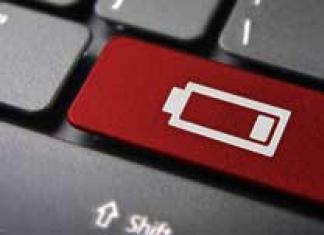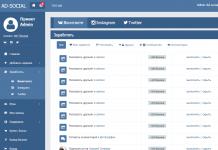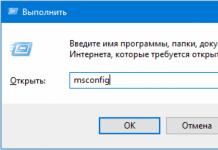Calibrating the laptop battery corrects errors in the operation of the controllers and allows you to keep the battery charged longer. Almost every model of a modern laptop is equipped with lithium-ion batteries of different capacities, depending on the specific equipment. This approach makes it possible to ensure long-term operation of the device in one charging cycle, which is why portable equipment is valuable. One way or another, any battery gradually loses its capacity over time and discharges faster, especially under heavy loads on the central processor, video card and hard drive. However, if you use the laptop correctly, then the threshold for reducing the efficiency of offline operation will occur very slowly.
Calibrating a laptop battery is the most important step in the initial setup of a new device, which is also relevant for other equipment that runs on Li-ion batteries, such as smartphones and tablets. This procedure is recommended to be carried out both immediately after purchasing a laptop and during its use. Calibration involves deliberately carrying out charge-discharge cycles, and is done so that the chip controller can display the real percentage without glitches. In addition, this procedure sometimes helps to “extend the life” of the battery when, for example, there is a sharp drop in charge or battery life lasts no more than 20-30 minutes in normal load mode.

Today this operation can be done in several ways, and one of them is manual calibration using standard Windows tools. The method works on any version of the OS and is practically the same; all you need is care and strict adherence to the instructions. First you need to check the current battery capacity and its level at one hundred percent charge. Surface information can be obtained as follows:
- Insert the charger and wait until charging finishes;
- Disconnect the laptop from the network;
- Check the battery level in the power settings.
If immediately after disconnecting the charging unit from the socket the percentage is less than 100, then you need to calibrate the battery.

The Windows OS tools also provide the ability to obtain more detailed information. The command line will help you find it out, which opens by entering the “CMD” command in the search; you need to run it as an administrator by right-clicking and selecting this option. Then enter the value powercfg.exe -energy -output d:\report.html, where D is the name of the local disk, which in your case may be different (C, E, and so on). This is where the report file will be saved with the name report and the extension .HTML. Open it using any browser and scroll to the “Battery Information” tab, then compare the indicators of the last full charge and the estimated capacity. If the first is much smaller than the second, then be sure to calibrate the battery.
Windows operating tools provide only information about the state of the battery, and the calibration procedure must be carried out manually or using specially designed software. First, it’s better to try to do everything yourself and if there is no result, resort to software. Manual calibration is carried out in several steps:
- Battery fully charged;
- Turn off the power supply and discharge to 0;
- Network connection.
Here it is very important to set the power mode correctly, because by default the system selects “Balanced”. In the above procedure, it is recommended to set “High Performance” in the settings, since this turns off various energy-saving technologies and increases the likelihood of successful calibration. In addition, when the charge level is low, the laptop will go into sleep or hibernation mode and will not allow the battery to drain to zero.
A laptop battery calibration program can play a very important role and help you cope with this task as efficiently as possible. In addition, when using the software, the entire process is carried out automatically and the user does not need to change any configuration. However, it must be taken into account that various programs are used for each laptop model.
In most cases, ASUS laptop battery calibration is carried out in the BIOS, since this manufacturer often integrates the necessary application in the form of a motherboard technological tool. Most often, this feature is present in the Phoenix BIOS, but you can check it yourself:
- Disconnect the power adapter from the laptop;
- Reboot or turn on the device, and then press F2 (sometimes another F);
- Go to the BOOT tab and find the Smart Battery Calibration menu, start the process.
Note: It is recommended to look for this item in all sections of the BIOS, and its name may also differ, but it must contain the word Battery. If there is no item, then it is better to calibrate manually according to the scheme described in the previous section of the article.

For laptops from manufacturers such as Samsung and Acer, there is an excellent calibration program on the Internet called. Its peculiarity lies in the possibility of faster discharge-charge cycles, due to the fact that it automatically starts the process of searching for the Number Pi, while putting the maximum load on the central processor. In general, its main purpose is to test and diagnose the condition of the battery both in idle mode and during peak loads. With its help, you can perform several cycles in one hour, choosing an accelerated method and high performance in the laptop settings.
The well-known manufacturer Lenovo has released a profile utility called . It is quite multifunctional regarding battery calibration, providing the user with comprehensive information and tools for correctly setting up the battery. Before starting the procedure, connect the power supply, close running applications and background processes, and do not use the gadget during the operation.
- very useful official software for Hewlett-Packard laptops. A large arsenal of tools makes it possible not only to calibrate the battery, but also provides a variety of functionality for diagnosing the general condition of the device. In the “My Computer” section you will find a battery check item and after the test, the program will notify you of the most preferable actions.
 Every experienced user of portable gadgets already knows and adheres to generally accepted advice on how to avoid or at least delay the death of the battery as much as possible. First of all, don't use it. This is by no means a joke, because when you are working on a device and there is a power outlet nearby, you need to remove the battery and plug the power adapter into the connector, so when you really need battery life, you will have much more time. This is due to the fact that any battery has a given number of cycles and energy capacity, which in any case is lost during natural operation.
Every experienced user of portable gadgets already knows and adheres to generally accepted advice on how to avoid or at least delay the death of the battery as much as possible. First of all, don't use it. This is by no means a joke, because when you are working on a device and there is a power outlet nearby, you need to remove the battery and plug the power adapter into the connector, so when you really need battery life, you will have much more time. This is due to the fact that any battery has a given number of cycles and energy capacity, which in any case is lost during natural operation.
Further, if you do not use the battery, then it is best to leave it at 60-70 percent. You probably never paid attention, but a new gadget, be it a smartphone or a laptop, always shows exactly this charge level when you first turn it on. Lithium-ion batteries do not like to be overcharged or completely depleted. And lastly, always try to comply with the recommended operating conditions, that is, do not allow the gadget to overheat, do not use the laptop in rooms with high humidity levels or at low temperatures. In general, the instructions present all these tips in clear and accessible language.
Most laptops have a built-in battery, which allows you to work on the device for some time without connecting to the network. Often such equipment is configured incorrectly, which leads to irrational use of charge. You can also optimize all parameters and configure the appropriate power plan manually using the built-in tools of the operating system. However, it is much more convenient and correct to perform this process through specialized software. We will look at several representatives of such programs in this article.
The main purpose of Battery Eater is to test battery performance. It has a built-in unique testing algorithm that will determine the approximate discharge rate, stability and condition of the battery in a short time. Such diagnostics are carried out automatically, and the user can only observe the process itself, and only then get acquainted with the results obtained and, based on them, adjust the power supply.

Among the additional functions and tools, I would like to note the presence of a general summary of the components installed in the laptop. In addition, there is also a test that allows you to determine the condition of the equipment, operating speed and load on it. You can also find more detailed battery information in the system information window. Battery Eater is a free program and is available for download on the developer’s official website.
BatteryCare
Immediately after launching BatteryCare, the main window opens in front of the user, where basic data about the state of the laptop battery is displayed. There is a scale of operating time and the exact battery charge in percentage. The CPU and HDD temperatures are shown below. Additional information about the installed battery is located in a separate tab. The declared capacity, voltage and power are displayed here.

The settings menu contains a power control panel, which helps each user set the necessary parameters that would be suitable for the battery installed in the device and maximize its operation without connecting to the network. In addition, BatteryCare has a well-implemented notification system, which allows you to always be aware of various events and battery charge levels.
Battery Optimizer
The last representative on our list is Battery Optimizer. This program automatically diagnoses the battery condition, then displays detailed information about it and allows you to set up a power plan. The user is asked to manually disable some equipment and functions in order to prolong the operation of the laptop without connecting to the network.

Battery Optimizer allows you to save multiple profiles, making it possible to instantly switch power plans to suit different conditions. In the software in question, all completed actions are saved in a separate window. Not only their monitoring is available here, but also rollback. The notification system will allow you to receive messages about low battery or remaining time without connecting to the network. Battery Optimizer is freely available on the developer's official website.
Above we looked at several programs for calibrating a laptop battery. They all work using unique algorithms and provide a different set of tools and additional features. Choosing the right software is quite simple; you just need to start from its functionality and pay attention to the availability of the tools you are interested in.
Calibrating a laptop battery is an important step for laptop users who monitor the condition of their devices.
Due to the operating characteristics of currently aging lithium-ion batteries, they require periodic adjustments before use so that the current charge is correctly detected
When is the setup done?
The procedure is required to be performed on new devices, which will give the user up-to-date information about the battery status.
Periodically, when glitches appear (indicators are determined incorrectly by the controller) or the laptop does not last long on battery power, it is also recommended to tune its battery.
The procedure will not eliminate physical wear and defects in the structure of batteries, but it may increase the battery life. At a certain charge level, usually 30%, the device goes into standby mode.
And if the controller shows that there is 30% of it left (and in reality this value is higher) and puts it into sleep mode, after that the current state of the capacity will be displayed.
In newer nickel-based cells, there is a so-called “memory effect” - it seems to remember the charge level when there is power from the network and does not discharge below this value, considering that this level corresponds to a full discharge.
Determining the battery capacity of a laptop computer
Before calibrating the battery, you should make sure that the operation is necessary, especially if there are no problems in determining the amount of charge. This is done via the command line.
- We launch it with administrator privileges, for example, by entering “cmd” in the “Run” window (Win + R) or through search in Windows 10.
- We execute the code “powercfg.exe -energy –output disk:\path\file_name.html” in it.
- We are waiting for the operation to complete (indicated by the closing of the window).
- We go to the specified directory and open the report created in html format.
To do this, you will need a browser, and the functionality of IE or the Edge built into the Top Ten is quite sufficient.
- We look through the report and find the capacity calculated by the controller and its value after the last full charge.
Calibration is carried out when the peak capacity of the battery is tens or more percent higher than the actual capacity obtained as a result of its last charge.
Battery tuning techniques
There are two ways to make the controller work correctly:
- manually - a more reliable and faster method;
- in automatic mode - via BIOS or special programs.
Manual setting
It is completed in three simple steps and does not require any third-party software.
1. Charge We increase to the maximum value of 100%.
2. Disconnect the cable from the network and wait until its charge drops to zero.
3. Connect again (as soon as possible) and charge to maximum.
It seems simple, but there is one nuance: when it decreases to a certain level (about 30%), the laptop goes into sleep mode, and therefore it will not be possible to achieve the desired effect in this way.
The following chain of actions will help to avoid such a situation (relevant for any Windows):
- Call up the “Power Options” applet.
This is done through a search in Windows 10 or the control panel when its elements are visualized in the form of large icons.
- Click “Create a power plan” in the menu on the left.
Here you can edit the current plan or create a new one. Let's take the second route, so as not to distort the standard settings of standard plans.
- We create a new power supply scheme, set its name and set high performance.
Entering a name and plan for the diagram
- Open additional power options.
- We prohibit turning off the display and sending the laptop to sleep mode.
Afterwards the scheme will be automatically activated.
If it suits you, after charging and disconnecting from the network, you can restart and wait for the device to turn off by entering the BIOS menu, but you will have to wait longer, because the processor load in this case is minimal.
Automatic setup
Many developers ship their laptops with power management utilities. Lenovo, for example, ships with an Energy Management utility.
Launch the software and click on the icon with the image of a gear to start the process.
Click “Start”, closing all third-party programs.
We connect the power cord to the network if it is not connected, and click “Continue”.
The battery will charge, discharge to zero and be charged again. There is no need to remove and connect the cable, and interrupting the process is strictly not recommended, nor is it recommended to use the device. Only in this case is success guaranteed.
BIOS
Those laptops that use the Phoenix BIOS I/O system have an integrated test and calibration function.
1. If such a BIOS is available, enter it using F2, Esc or Del when restarting the PC.
2. Go to the “Boot” tab.
3. Call the item “Smart Battery Calibration”
4. Confirm the launch of the process by clicking “Yes”.
5. At the end of the operation, exit the BIOS.
Advice! It is important that during the calibration process the battery is fully charged and the laptop is unplugged, otherwise an error will be displayed.
Third party software
If you don’t have the desire/opportunity to manipulate the BIOS/UEFI, download applications like Battery Care or Battery Eater or Battery Mark if there is no standard software to solve the problem.
The last program, after charging, loads the CPU with the task of calculating the infinite value of Pi.
The utility will additionally allow you to conduct comprehensive testing of the battery both during peak loads on the hardware and in case of idle time.
A special algorithm will allow you to perform a couple of discharge-charge cycles for about an hour (the time depends on the capacity and degree of wear).
Hewlett-Packard ships laptops with HP Support Assistant.
The “My Computer” subsection contains tools for testing and debugging a laptop PC.
Correct operation
Following these tips will help you extend your battery life:
- Complete unnecessary tasks and processes, each of which consumes charge.
- Reduce the display brightness level to the lowest possible without affecting the operation of the device.
- Follow the list of software that runs along with Windows.
- Do not overheat it above the specified temperature limit.
- Remove the battery when not using it for a long time.
- Try not to use in the cold.
- Bring the battery to full discharge as rarely as possible.
- Perform a complete discharge and charge cycle a couple of times a year.
Simple rules will also extend the service life.
If the battery charge is displayed incorrectly, calibrating the laptop battery will help you. Over time, the original battery capacity of your device is lost and the full charge may be displayed incorrectly (5% charge is displayed, although the real charge is 20-30%). Please note that physical wear cannot be eliminated, but controller reading errors and software errors will be eliminated.
How often should the battery be calibrated?
Some manufacturers recommend calibration every two to three months. This helps you read the battery more accurately.
In fact, you don't have to worry about such frequent manipulations if you don't care about the most accurate charge indicator. But when your laptop turns off without any warning or you notice a rapid battery drain in the last 10-15%, then it's time to calibrate the battery.
How to manually calibrate a laptop battery
At the moment, there are 2 main calibration methods used: Manual or Software. Both methods work on the same principle - completely discharging and fully charging the battery to restore the charge controller's performance. The only difference is that laptop battery calibration programs can display more information and perform additional software manipulations to obtain the best result. But from personal experience we can say that the differences between these two methods are minimal.
So let's get started. The whole point of calibration is to fully charge and fully discharge the battery. In this case, the charge controller readings will be reset, which will allow you to more accurately determine the charge readings in the future.
To begin, open the settings for your power plan: Control Panel – Power Options
Setting up the power plan

Change advanced settings

Expand Battery Settings and select options as shown in the image.

The main goal of these manipulations is so that when the charge is complete, the device does not go to sleep, but goes into hibernation, which in our case is more convenient. Set the full discharge level to 5% or less, the lower the better. Then set a ban on going to sleep or turning off the display when running on battery power so that the battery discharge process is not interrupted. After completing all the manipulations, you need to set these parameters to default or according to your preference.

Procedure:
- Charge your battery to 100%
- Disconnect the power cord and completely discharge the battery before turning it off (or going into hibernation)
- Connect your device to power and charge it to 100%
Laptop calibration programs
Software calibration is a rather complex process. A large number of battery and laptop models, differences in chipset drivers, ACPI drivers and many other reasons do not allow us to create a universal calibration application. But such applications still exist. Most of them were created by device manufacturers, which is not surprising, because supporting the software component is one of the manufacturer’s responsibilities.
BatteryCare
To check the charge and collect battery statistics, the free application BatteryCare is perfect. It does not have the ability to perform calibration, but the information that is displayed through this software can tell you whether there are any shortcomings in the operation of the laptop and its power supply.
BatteryCare can be downloaded from the developer’s official website. This utility shows the battery charge and the approximate time until the battery is discharged in the tray. The application can monitor the temperature of the processor and hard drive and will notify you if they are overheated.

Another program for calibrating a laptop battery is Smarter Battery (download). This utility is paid, but there is a free promotional period of use. The functionality of this application is richer, unlike the previous utility. Statistics collection, notifications, widgets, capacity, power settings - the main list of application functions. Registration is required in order to perform calibration.


If this software is not suitable for you, try paying attention to programs and advice from laptop manufacturers.
Almost every manufacturer has a utility for calibrating a laptop battery; it is usually included in the pre-installed software package.
In addition, it is possible to perform calibration through the laptop BIOS. There is a topic on the Samsung website that may also apply to other laptops (with Phoenix BIOS)
For other manufacturers (Asus, Acer, Dell and others), either there are no utilities or they are very outdated and are available for a limited number of models.
To maintain the correct operation of your device and its power supply, you should know several rules:
- Always update your drivers: ACPI drivers and chipset drivers are the main components responsible for the power supply circuits and the interaction of the main software and hardware components of your device.
- BIOS/UEFI update. Maintaining current firmware versions has a positive effect on the laptop's power supply.
- Use of different power supply schemes depending on the load. Surfing the Internet and watching movies does not require High Performance Mode, and sometimes this negatively affects the charge performance.
- In cases where the laptop only works on mains power or the battery is completely discharged in 10-15 minutes, you should think about purchasing a new power source or contacting the Service Center to diagnose the hardware component if the new battery does not help.
Let's hope that this article helped you in resolving your issue. If you have any additional questions or difficulties, write comments on this article, we will try to help.
Have a great day!
Battery calibration- This is an important step for portable laptop users who monitor the condition of their devices.
Due to the peculiarities of their functioning, they currently require periodic adjustment before use so that the current charge is correctly determined
Contents:
When is the setup done?
The procedure is required to be performed on new devices, which will give the user up-to-date information about the battery status.
The procedure will not eliminate physical wear and defects in the structure of batteries, but it may increase the battery life. At a certain charge level, usually 30%, the device goes into standby mode.
And if the controller shows that there is 30% of it left (and in reality this value is higher) and transfers it to , then the current state of the capacity will be displayed.
Newer nickel-based cells exhibit what is called a “memory effect.”
It seems to remember the charge level when there is power from the mains and does not discharge below this value, considering that this level corresponds to a complete discharge.
Determining the battery capacity of a laptop computer
Before calibrating the battery, you should make sure that the operation is necessary, especially if there are no problems in determining the amount of charge.
- We launch it with administrator privileges, for example, by entering “cmd” in the “Run” window (Win + R) or through search in Windows 10.
- We execute the code in it "powercfg.exe -energy –output disk:\path\filename.html".

- We are waiting for the operation to complete (indicated by the closing of the window).
- We go to the specified directory and open the one created in the .
To do this, you will need a browser, and the functionality of IE or the built-in “ten” is quite sufficient.

- We look through the report and find the capacity calculated by the controller and its value after the last full charge.
Calibration is carried out when the peak capacity of the battery is tens or more percent higher than the actual capacity obtained as a result of its last charge.

Battery tuning techniques
There are two ways to make the controller work correctly:
Manual setting
It is completed in three simple steps and does not require any third-party software.
1 Charge to the maximum value of 100%.
2 Disconnect the cable from the network and wait until its charge drops to zero.
3 Connecting again(as soon as possible) and charge to maximum.
It seems simple, but there is one nuance: when it decreases to a certain level (about 30%), it goes into sleep mode, and therefore it will not be possible to achieve the desired effect in this way.
The following chain of actions will help to avoid such a situation (relevant for any Windows):
- Calling the applet Power supply .
This is done through a search in Windows 10 or the control panel when its elements are visualized in the form of large icons.

- Click on the menu on the left "Create a power plan".

Here you can edit the current plan or create a new one. Let's take the second route, so as not to distort the standard settings of standard plans.
- We create a new power supply scheme, set its name and set high performance.

Entering a name and plan for the diagram

Afterwards the scheme will be automatically activated.
If it suits you, after charging and disconnecting from the network, you can restart and wait for the device to turn off by entering the BIOS menu, but you will have to wait longer, because the processor load in this case is minimal.
Automatic setup
Many developers ship their laptops with power management utilities. , for example, come with an Energy Management utility.
- Launch the software and click on the icon with the image of a gear to start the process.

- Click “Start”, closing all third-party programs.
- We connect the power cord to the network if it is not connected, and click “Continue”.

The battery will charge, discharge to zero and be charged again. There is no need to remove and connect the cable, and interrupting the process is strictly not recommended, nor is it recommended to use the device.
Only in this case is success guaranteed.
BIOS
Those laptops that use the Phoenix BIOS I/O system have an integrated test and calibration function.
Third party software
If you don’t have the desire/opportunity to perform manipulations in , download applications like Battery Care or Battery Eater or Battery Mark if there is no standard software to solve the problem.
The last program, after charging, loads the CPU with the task of calculating the infinite value of Pi.

The utility will additionally allow you to conduct comprehensive testing of the battery both during and in the event of its downtime.
A special algorithm will allow you to perform a couple of discharge-charge cycles for about an hour (the time depends on the capacity and degree of wear).
Hewlett-Packard ships laptops with HP Support Assistant.
The “My Computer” subsection contains tools for testing and debugging a laptop PC.
Correct operation
Following these tips will help you extend your battery life:
Simple rules will also extend the service life.


























